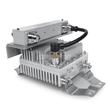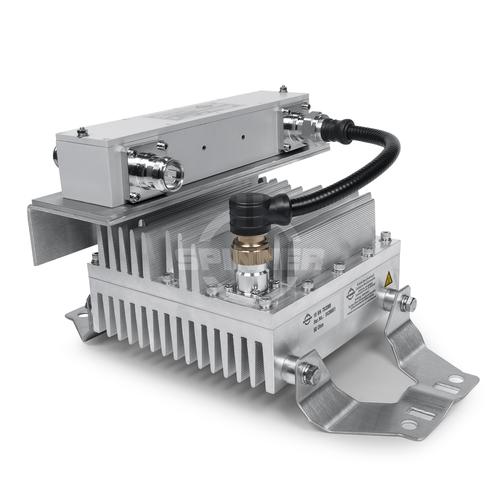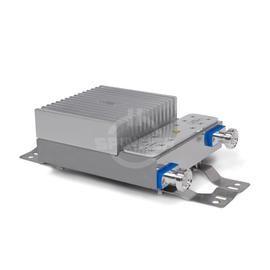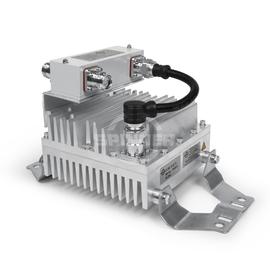SPINNER Combining Units for best radio frequency networks performance
Combining units are essential components in radio frequency networks, used to merge signals from multiple sources or split signals into multiple paths while maintaining signal integrity. All combiners work in bi-directional mode and can therefore be used to combine and split the transmitted and received signals.
The 2 : 1 Hybrid combiner 350-2700 MHz 4.3-10 female DC port 2 to 3 guarantees excellent, lossless mobile communication quality for use in in-building distributed antenna systems (DAS) or on mobile communication base stations outdoors.
A hybrid combiner is a device that combines two or more input signals into a single output or to multiple outputs while maintaining the isolation between the input ports. This combiner uses hybrid couplers, which are passive devices that can split or combine signals with minimal loss and high isolation. Hybrid combiners are particularly useful in applications where signals from multiple transmitters need to be combined efficiently without interfering with each other, thus optimizing the use of available spectrum, and reducing equipment costs.
Typical applications are:
- In-Building Distributed Antenna Systems (DAS): Hybrid combiners are commonly used in large buildings, stadiums, airports, and other indoor spaces. They allow multiple operators’ signals to be combined and distributed seamlessly.
- Outdoor Base Stations: When deploying base stations in outdoor environments, hybrid combiners ensure efficient utilization of antenna resources.
- Hybrid Networks: In scenarios where different wireless standards (e.g., GSM, 3G, LTE, 5G, 6G) coexist, hybrid combiners enable smooth signal sharing.
Critical characteristics are:
- Low insertion loss: minimizing signal loss during combining ensures optimal network performance.
- Excellent signal isolation: high isolation between input ports prevents interference.
- Superior intermodulation properties: hybrid combiners must handle multiple signals without introducing distortion.
- Robust construction: outdoor versions withstand environmental conditions (temperature, humidity).
- Indoor and outdoor installation capability: flexibility for various deployment scenarios.
Benefits are:
- Efficient spectrum utilization: hybrid combiners optimize spectrum usage by allowing multiple services to share a common antenna.
- Compatibility with various mobile communication systems: They accommodate different wireless standards.
- Cost-effectiveness: Shared infrastructure reduces costs for operators and building owners.
- Quick deployment: easy installation speeds up network rollout.
SPINNER’s hybrid combiners excel in reliability, performance, and adaptability. Our products are recommended because they provide a seamless solution for both indoor and outdoor mobile communication networks. Whether enhancing in-building coverage or expanding network capacity, SPINNER’s Hybrid Combiners offer a reliable backbone for efficient signal sharing.
A SPINNER 2 : 1 Hybrid combiner 350-2700 MHz 4.3-10 female DC port 2 to 3 guarantees outstanding IM characteristics with maximum passive intermodulation (IM3) of -140 dBc @ 350 to 694 MHz, -150 dBc @ 694 to 2700 MHz and low VSWR values over the entire frequency range and during the entire operating time.
The protection class is IP 68.
The port path designation regarding main line and probe is as follows: Port 1, 2: input, Port 3: output
It supports the use following frequency bands : 300, 700, 800, 900, 1500, 1800, 2100, 2300, 2400, 2600
The 4.3-10 connector system was designed to meet the latest requirements in mobile communication in terms of size, robustness, performance, and other parameters. Its small footprint supports the use of smaller components, mitigates risks if equipment is assembled without due care, and delivers outstanding electrical performance.







